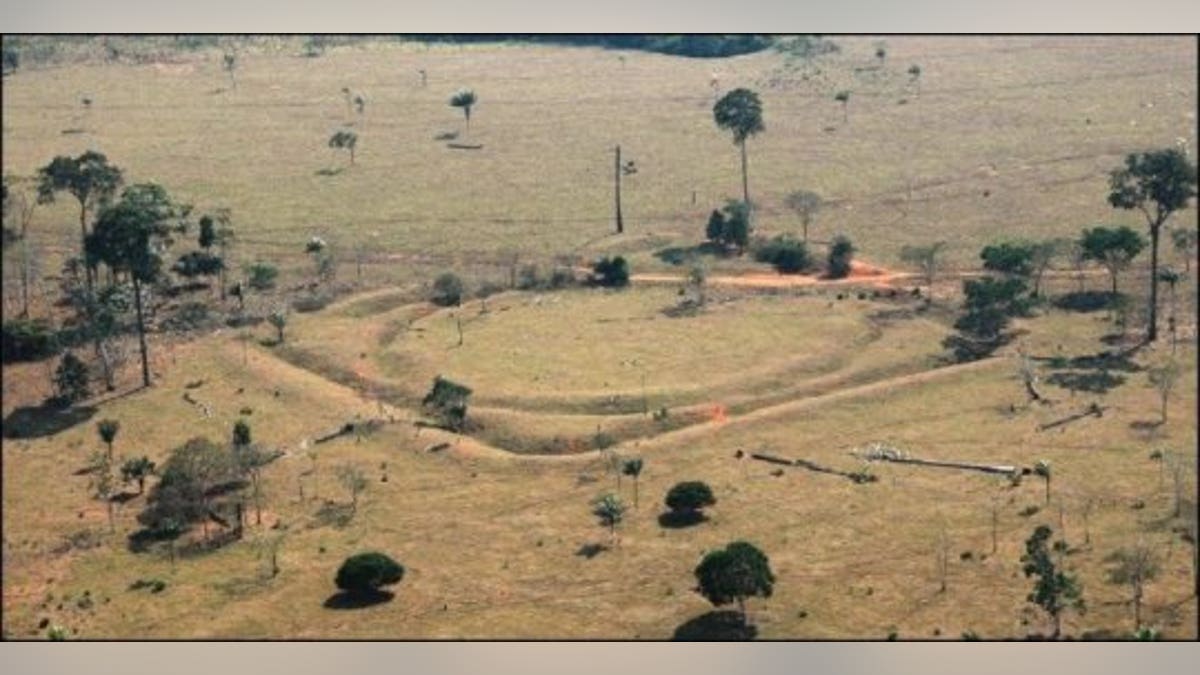Amazon discovery: 'Uninhabited' areas once home to millions
Experts have uncovered stunning evidence that parts of the Amazon long thought to have been almost uninhabited were once home to populations of up to a million people.
Experts have uncovered stunning evidence that parts of the Amazon long thought to have been almost uninhabited were once home to populations of up to a million people.
Archaeologists from the University of Exeter in the U.K. have found the remains of hundreds of villages in the vast rainforest. Intriguingly, the sites are away from major rivers, challenging the long-held theory that ancient Amazonian communities preferred to live near waterways.
The discovery fills a major gap in the Amazon’s history, according to the researchers. “There is a common misconception that the Amazon is an untouched landscape, home to scattered, nomadic communities,” explained Dr. Jonas Gregorio de Souza, a postdoctoral research fellow at the University, in a statement. “This is not the case. We have found that some populations away from the major rivers are much larger than previously thought, and these people had an impact on the environment which we can still find today.”
PHOTOGRAPHER CAPTURES INCREDIBLE IMAGES OF ISOLATED AMAZON TRIBE
De Souza is a member of the research team that found the remains of long-abandoned fortified villages and mysterious geoglyphs – man-made ditches with unusual square, circular or hexagonal shapes. University of Exeter researchers have spent years studying the strange markings. While the specific purpose of the earthworks is unknown, they may have been used in ceremonial rituals, according to researchers.

An aerial photo of one of the structures at the Jacó Sá site in Brazil's Mato Grosso state. (Credit: University of Exeter)
The discoveries were made in the state of Mato Grosso in western Brazil. By studying charcoal remains and excavated pottery, archaeologists found that a 695-square-mile stretch of Southern Amazonia was continuously occupied from 1250 to 1500 by the inhabitants of the enclosed villages.
Researchers estimate that where between 1,000 and 1,500 fortified villages, two-thirds of which are yet to be found.
STRANGE AMAZON MARKINGS BAFFLE EXPERTS
The new study, which was published in the journal Nature Communications, describes an estimated 1,300 geoglyphs across 154,441 square miles of Southern Amazonia. Some 81 geoglyphs were found in the area surveyed for the research, with villages often found near of even inside the geoglyphs. A network of causeways once linked the communities.
The population in the area surveyed was at least in the tens of thousands, and may have been as many as a million people, according to archaeologists.
Experts believe that the earthworks were probably constructed during seasonal droughts, enabling the forests to be cleared. Fertile soil was found in drier areas, they explain, allowing farmers to grow crops and fruit trees such as Brazil nuts.
MYSTERIOUS LOST MAYA CITIES DISCOVERED IN GUATEMALAN JUNGLE
“Our research shows we need to reevaluate the history of the Amazon,” said University of Exeter Professor José Iriarte, who is also a member of the research team, in the statement. “It certainly wasn’t an area populated only near the banks of large rivers, and the people who lived there did change the landscape.”
The stunning Amazon discovery could also have modern-day implications. “The Amazon is crucial to regulating the Earth’s climate, and knowing more about its history will help everyone make informed decisions about how it should be cared for in the future,” said de Souza, in the statement.
Brazil’s Federal University of Pará in Belém, National Institute for Space Research (INPE) and the Universidade do Estado de Mato Grosso all participated in the research, which was funded by National Geographic and the European Research Council.
'LOST CITY' REVEALED IN SOUTH AFRICA USING LASER TECHNOLOGY
There are other fascinating examples of how modern archaeology is shedding new light on ancient cultures. In a separate project, archaeologists harnessed remote surveying technology to reveal lost cities and thousands of ancient structures deep in the Guatemalan jungle, confirming that the Maya civilization was much larger than previously thought.
In Northern Iraq researchers used spy satellite imagery and drones to help identify the site of an ancient lost city. In South Africa archaeologists deployed sophisticated laser technology to locate the site of a city that was occupied until about 200 years ago.
Follow James Rogers on Twitter @jamesjrogers

